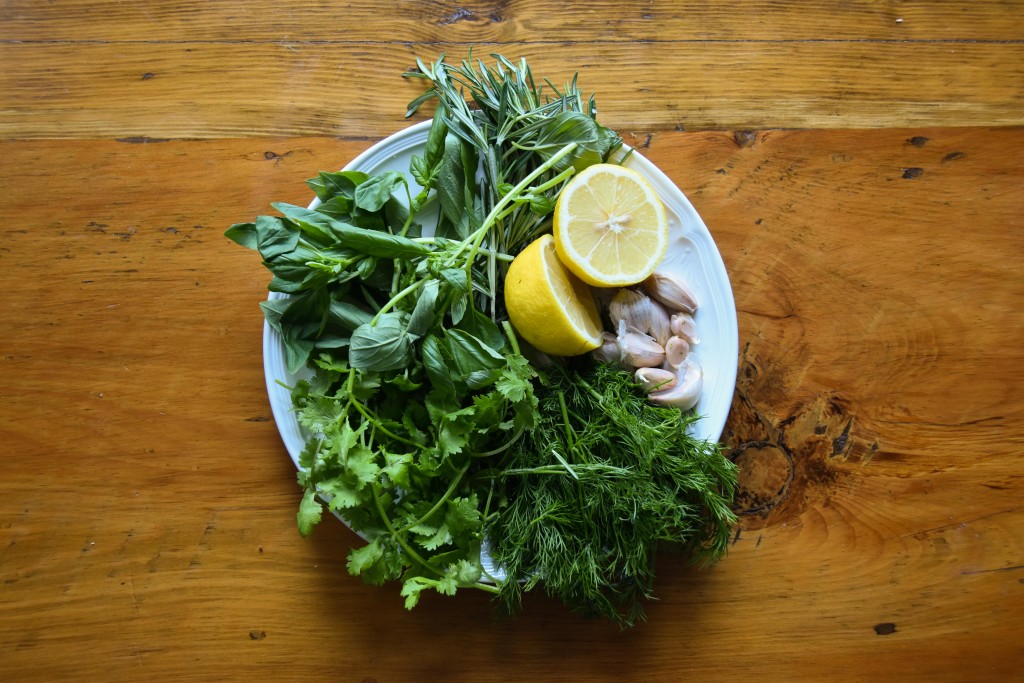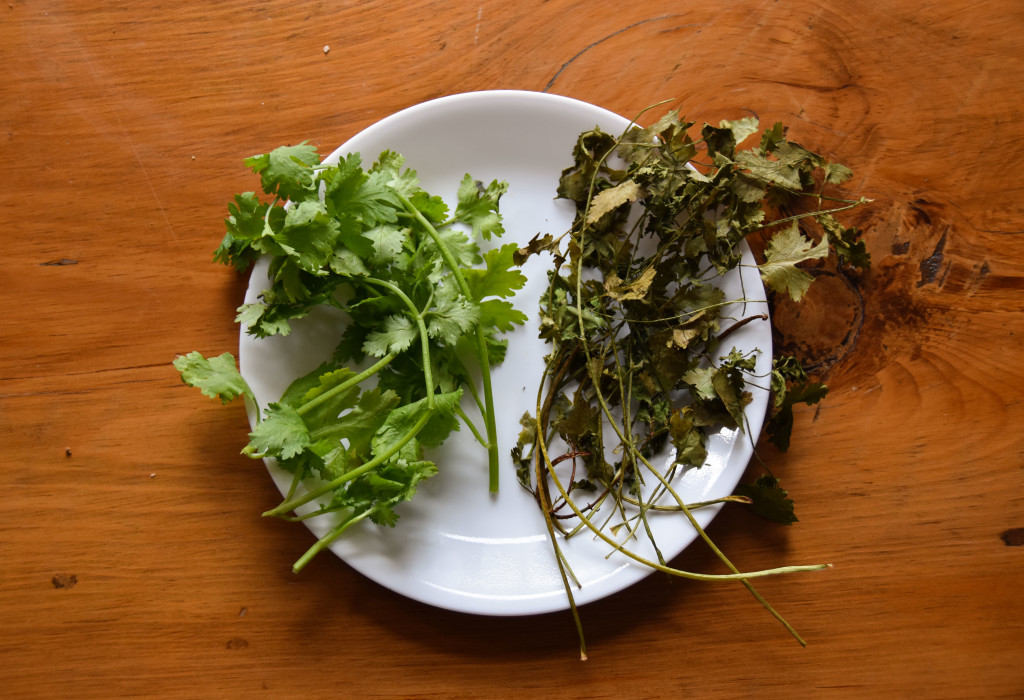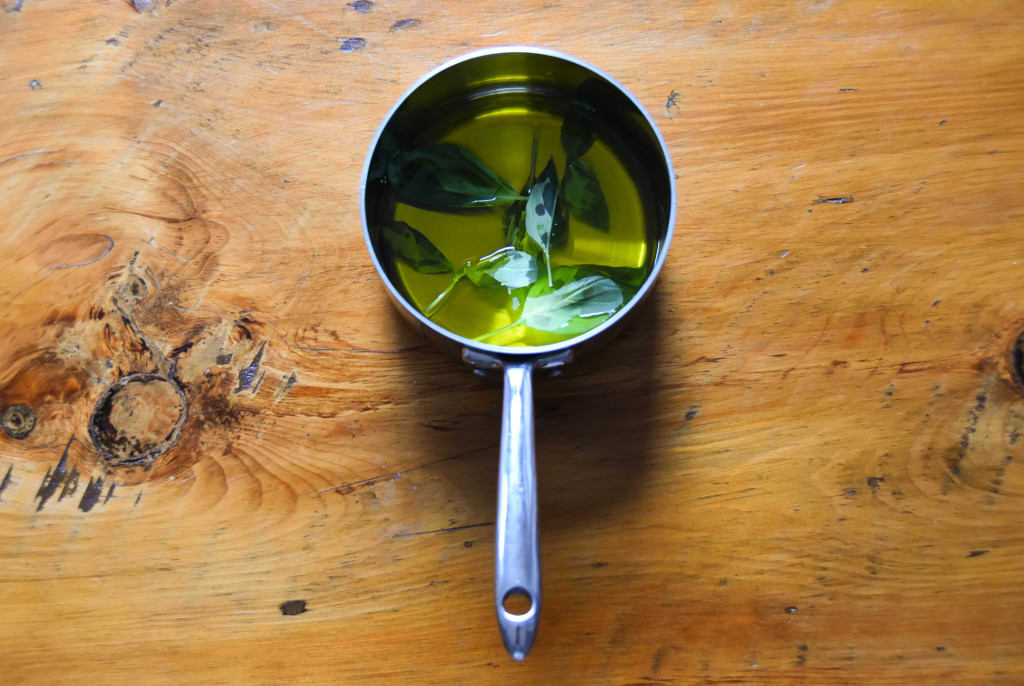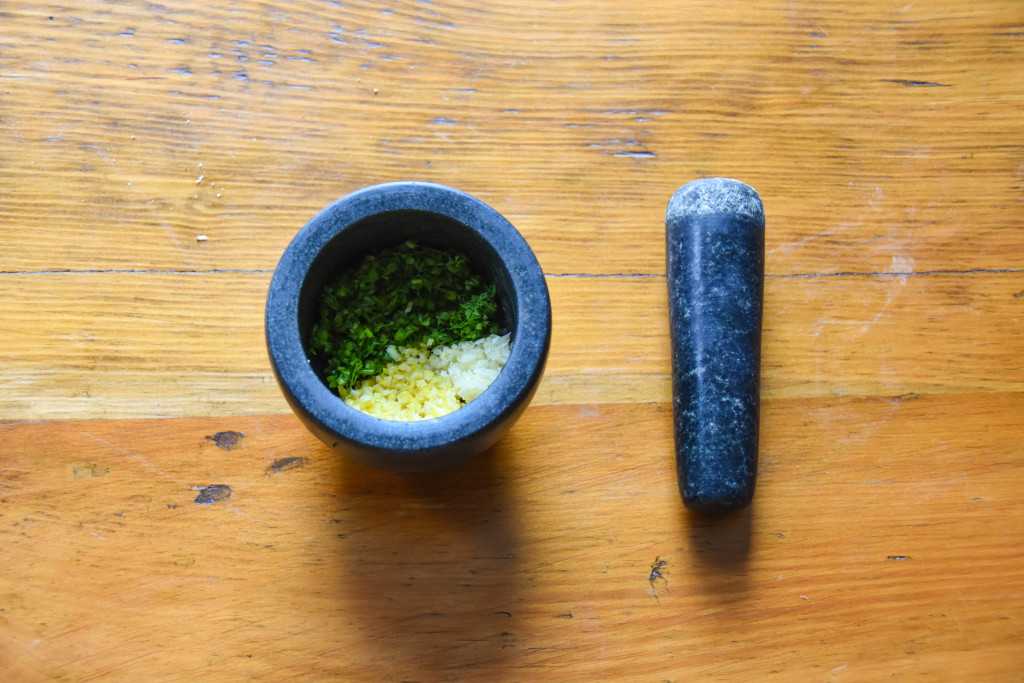Herbs are a great addition to any dish that needs a kick of flavour but not any extra oils or salt. Their strong aroma means that recipes often call for only a couple tablespoons of them, but the problem is you’ve probably only ever seen herbs sold in bundles resembling small rain forest canopies. What the heck are you supposed to do with all of it?

Photo by Irvin Mai
Let’s say you bought a hefty bouquet of basil to bump up your pasta sauce game last week and the leftover foliage now stands on its last leg in the fridge. Here’s three ridiculously easy ways to put those herbs to use before they’re claimed by the compost, because nothing’s sadder than herbs gone bad. Nothing.
Dried Herbs
It takes almost no effort to dry herbs, just spread them out in a single layer on a baking sheet and pop them in the oven on its lowest setting for 3-4 hours.

Photo by Irvin Mai
Once your herbs are all dried out, you can freely substitute them for fresh herbs in most recipes by using only one third of the called for amount because the lack of water in dried herbs makes their flavour more concentrated.
Don’t be tempted to turn up the temperature if your herbs are taking longer to dry than expected. The low heat dehydrates the herbs as opposed to cooking them, which can mute the flavour of the finished product
#SpoonTip: Use a perforated baking sheet if possible for better air flow and faster drying times
Herb-Infused Oils
Two ingredients — herbs and oil — it doesn’t get much simpler than that. Combine a 1:4 ratio of loosely-packed fresh herbs to oil in a sauce pot and let it sit over low heat for a half hour, or until fragrant.

Photo by Irvin Mai
When finished, herb-infused oils are great served alongside grilled meat (like this) with a wedge of citrus and crusty bread for dipping, or added sparingly into salad dressings.
Lightly bruise more robust herbs (such as rosemary or thyme) to release essential oils that would normally take longer to extract than those of more delicate herbs (such as cilantro or basil).
#SpoonTip: Avoid flavourful oils like olive or coconut as they can mask the herbs’ flavours. Opt for canola or grapeseed which have more neutral flavours.
Gremolata
Gremolata is a three ingredient condiment traditionally made with parsley, lemon, and garlic. Other herbs can be substituted and it’s not uncommon for multiple herbs to be used in the same gremolata. An 8:2:1 ratio of herbs to lemon zest to raw minced garlic is common, but it can be tweaked according to your taste.

Photo by Irvin Mai
The combo of fresh herbs and citrus makes gremolata great for balancing rich flavours. Try it with fatty fish or meats, tossed with fries, or added to stews for a burst of freshness.
Bear in mind what you’ll be serving the gremolata with and play around with substitutions to match. Here’s some ideas to get you started: salmon and dill, lamb and mint, beef and rosemary, chicken and cilantro.
#SpoonTip: The raw garlic in gremolata recipes is really pungent and can easily overpower the whole condiment, so use it sparingly.
There you go — three foolproof ways to use up leftover herbs and add a kick of greenery to your cooking. Keep these in mind the next time you find yourself lost in the herbaceous forest that is your fridge and you’ll never waste another leaf.


